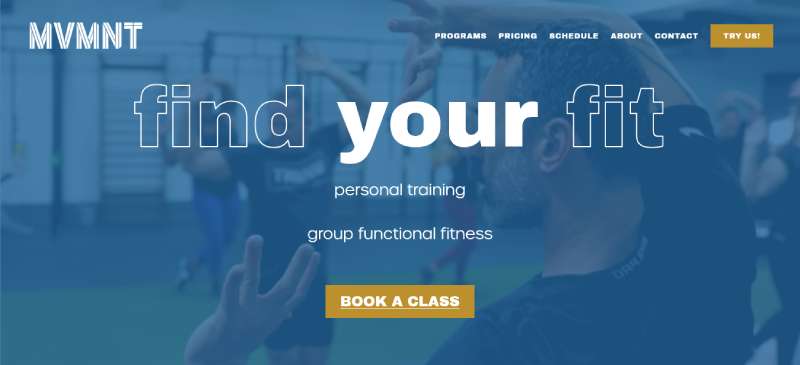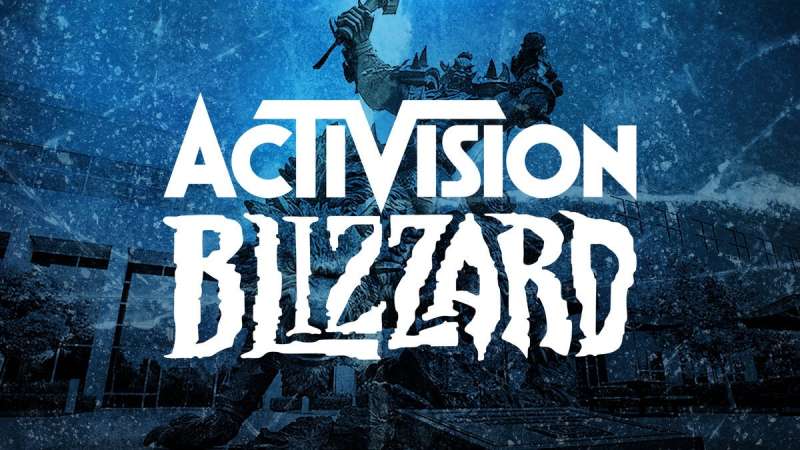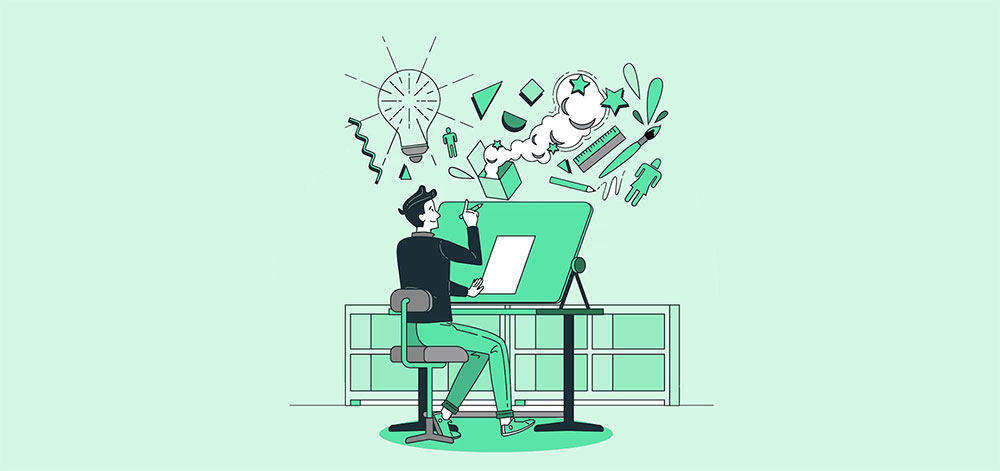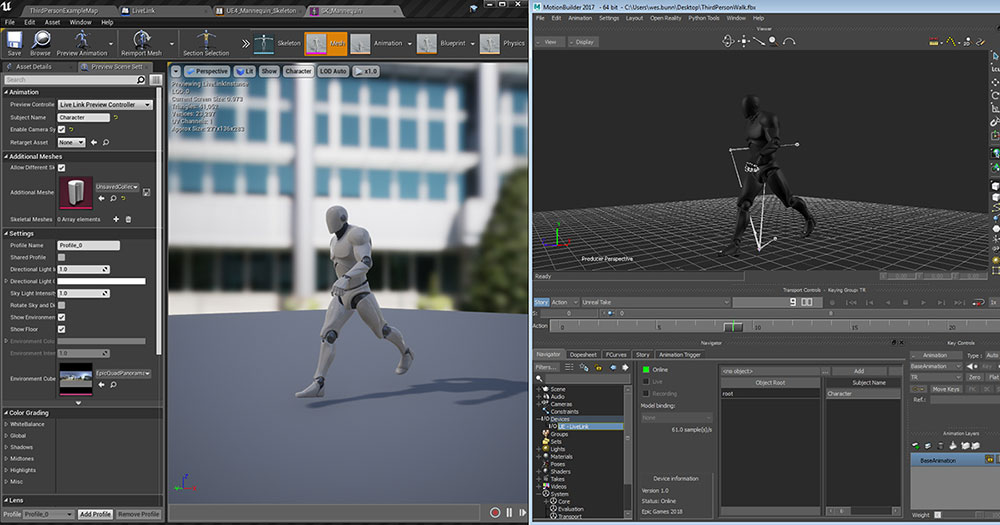Breaking Down the Role: UI Designer vs UI Developer
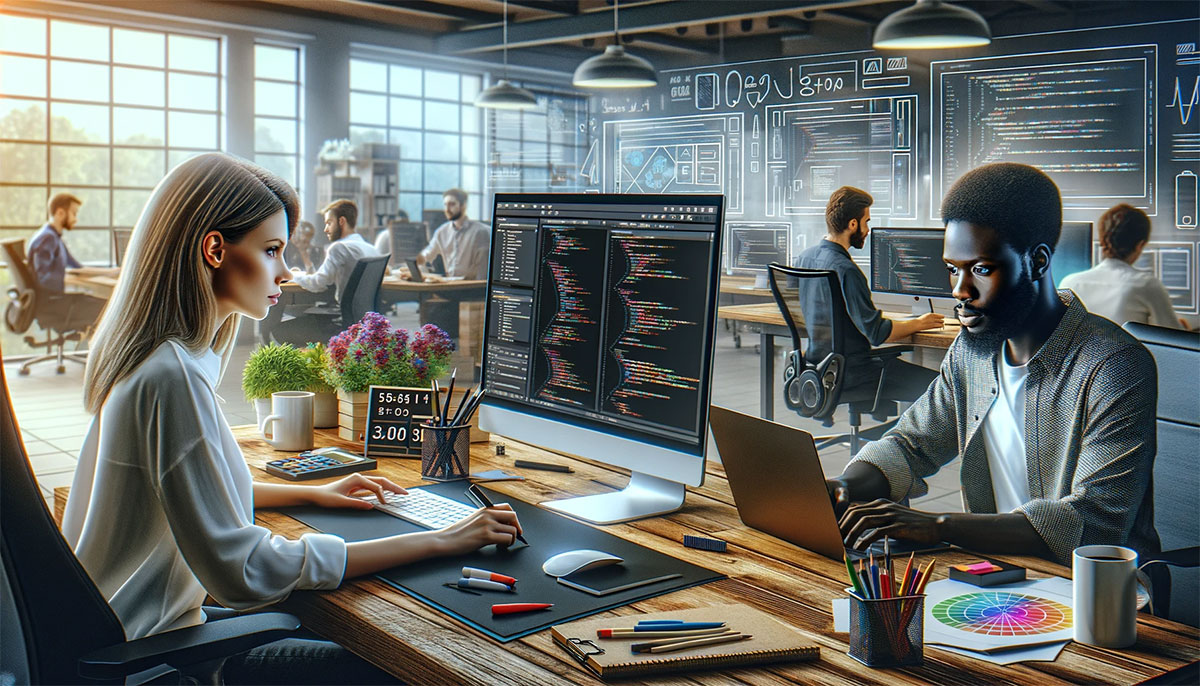
Ever find yourself in a digital world thinking, “What’s the magic behind this captivating interface?” Hold that thought. Right here, we’re cracking open the ever-blurring lines between two creative powerhouses: UI designers and UI developers.
Think of a masterpiece painting – the designer dreams it, and the developer brings it to life.
Dive in, and by the time we’re finished, you’ll grasp the secret sauce that makes a user’s digital journey intuitive, stunning, and seamless.
Whether you’re considering a career pivot or simply itching to decode what powers the enchanting screens we swipe daily, this revelation is for you.
We’ll weave through the UX/UI best practices, spotlight those prototyping tools, and decode front-end coding – all in a way that’s as engaging as a story.
By the final punctuation mark, a clear image will emerge, separating, yet celebrating, the art and science of designing and developing user interfaces.
Understanding the Basics
What is UI Design?
Man, I can’t tell you how many times people have asked me this! So, let’s dive right in, shall we?
UI Design, or User Interface Design, is basically like setting up the stage for a play.
You’re deciding where things go, what they look like, and how they’ll react when someone interacts with them. It’s a mix of art and science.
Principles of UI Design
You’ve got to think about things like:
- Consistency: The buttons and icons? They’ve got to look and behave the same throughout.
- Simplicity: Ever heard of the KISS principle? “Keep It Simple, Stupid.” Trust me, nobody wants to use an app that feels like you need a PhD to navigate.
- Feedback: Let your users know when they’ve done something. Whether it’s a subtle animation or a pop-up, it helps.
Importance of aesthetics and functionality
This is the big one. While you want things to look pretty, they also have to work. Ever been to a site that looked amazing but took ages to load or was just plain confusing? T
hat’s a big no-no. So balancing beauty with brains is key. Remember, we’re talking about UI designers vs UI developers here. The designer sets the stage; the developer ensures the play runs smoothly.
What is UI Development?
Alright, after setting the stage, someone needs to make sure the lights work, the curtains move, and the sound is on point. That’s where UI Development comes in.
Role of coding in bringing designs to life
I mean, designs are cool and all, but without coding? They’re just pretty pictures.
UI Developers take those designs and write code to make them functional. They’re like the backstage crew in our play analogy.
Importance of usability and integration
And it’s not just about making things look good. They need to work seamlessly, integrate with other systems, be usable on mobiles, desktops… you get the drift.
UI Designer: Role and Responsibilities
Defining the user experience
Ah, the life of a UI Designer. It’s not just about picking pretty colors. Nope. It’s about understanding the user. What do they need? How do they think?
Crafting user journeys
Imagine if you were creating a story. You’d plot out a beginning, middle, and end, right? Same thing here. From the moment a user logs in to when they log out, what’s their journey like?
Designing interactive elements
And during that journey, how do they interact with the platform? Do they swipe? Click? Zoom? It’s like choreographing a dance, I swear.
Tools and Technologies
Being a UI Designer is kind of like being in a band. You need instruments to make music.
Design software
You’ve got your classics like Adobe Photoshop and Illustrator. These are the electric guitars of design, if you will. They help bring your visions to life.
Prototyping tools
But before going live, you want a test run. That’s where tools like InVision and Sketch come in. They’re like your rehearsal spaces.
Collaboration with other teams
And just like in a band, collaboration is key.
Working with UX designers
UX is all about how the user feels. So, while I might make things look good as a UI Designer, the UX team makes sure it feels good too.
Handing off designs to developers
Once I’ve got the design ready, it’s time to pass the baton to the developers. They’re the ones who’ll take my designs and make them come alive.
UI Developer: Role and Responsibilities
Translating designs into functional interfaces

Being a UI Developer is like being the chef in a fancy restaurant.
The designer (that’s the UI Designer) plans the menu, picks out ingredients, and imagines what the final dish should look like. And then, the chef, or the UI Developer in this case, whips out their tools and brings that vision to life. Simple, right?
Writing code (HTML, CSS, JavaScript)
So, we got three main heroes here: HTML, CSS, and JavaScript. Think of HTML as the skeleton, CSS as the skin and clothes, and JavaScript? That’s the soul, making everything move and groove.
Ensuring responsiveness and cross-browser compatibility
Remember that feeling when your favorite shirt shrinks in the wash? Yeah, sites can feel that way too. On big screens, tiny screens, and everything in-between, it’s gotta look good.
Plus, whether you’re a Chrome devotee or a Firefox fan, sites should work the same.
Tools and Technologies
Just like any artist, a UI Developer has their toolkit. And trust me, it’s packed!
Code libraries and frameworks
It’s like having a collection of pre-made pizza bases when you’re making pizzas. Why start from scratch when there are libraries and frameworks out there? Ever heard of Bootstrap or React? Bingo!
Version control systems (e.g., Git)
Okay, so imagine writing a song and then wanting to go back to the original after a gazillion edits. That’s what tools like Git do. They keep track of all the changes, like a super cool time machine for code.
Collaboration with other teams
No (wo)man is an island. Especially not in the digital world.
Working with backend developers
While I make the front all shiny and user-friendly, the backend developers are the magicians behind the curtain. They make sure everything ticks, clicks, and sticks.
Implementing feedback from UI/UX designers
Feedback’s the name of the game. When the UI/UX folks say, “Hey, can we make this button pop more?” or “This transition feels a tad slow”, it’s go-time for tweaks and tunes.
Key Differences and Overlaps
Design vs. Implementation
One dreams it, the other builds it.
Skill sets required for each role
While there’s overlap, there are distinct differences too.
- UI Designer skills: Creative, intuitive, visual, aware of the latest design trends. They’re the daydreamers.
- UI Developer skills: Logical, problem-solving, tech-savvy. These folks know their way around a line of code.
But guess what? The line’s blurring! Some designers can code, and some developers have a wicked design sense.
The evolving nature of UI roles in different company sizes
In a startup? You might wear both hats. Designing today, coding tomorrow. But in bigger companies? Roles can get super specialized. There might be someone just to handle buttons! Crazy, right?
The Interplay of UI with UX
How UI complements UX
Look, if UI is the look of your favorite band, then UX is the sound. Makes sense? You can’t have a killer album cover with trash music, and vice versa. They go hand-in-hand, like fries and ketchup.
UI Designer vs UI Developer: The Duet
Okay, so the UI Designer is like the band’s stylist, making them look dope for the gig.
Meanwhile, the UI Developer makes sure the stage lights, smoke, and visuals are all set to vibe with the music.
Building a Story Together
Imagine going to a theme park. The rides are the UX, the maps, and decor? That’s UI.
Both gotta sync up. You can’t just slap together a scary haunted house ride and then use bright, cheery maps and signs. It messes with the whole story, man.
The importance of a cohesive user experience
Ever had that moment when everything just clicks? Like, everything from the wallpaper to the font just gets you. That’s what we’re aiming for: a cohesive, or shall we say, seamless user experience.
UI designers vs UI developers are like lyricists and music producers. One writes the lyrics; the other sets the tune. When done right, you get a hit song—or in our case, a kickass website or app.
Trends and Future of UI Design and Development
The rise of frameworks and their impact on custom designs
Remember the days when everyone had custom ringtones? Well, with the rise of code frameworks like Angular and Bootstrap, things are a bit…cookie-cutter now.
Balancing Act
Using a framework is like cooking from a meal kit. It’s easy, but not unique. The challenge is making it yours, adding that secret sauce.
UI Designer vs UI Developer in the Framework Age
The UI Designer now has to think: “How can I make this unique?” The UI Developer asks: “How can I make this efficient?” It’s a back and forth, like a dance-off. Each move calculated but flexible.
The importance of staying updated with industry standards
Keeping up with the Kardashians? Nah, try keeping up with web trends! Dark mode today, minimalism tomorrow—gotta stay on your toes.
Why? Because Users Evolve Too
Ever notice how your parents are suddenly using emojis? Exactly. User behavior changes. If you’re in the UI game, whether as a designer or a developer, stay woke.
Choosing the Right Professional for Your Project
When to hire a UI Designer vs. a UI Developer
The first rule of Fight Club is you don’t talk about Fight Club. The first rule of picking between a UI Designer and a UI Developer is, know what you need.
Got a Vision but No Blueprint?
You need a UI Designer. Someone to lay it all out, pretty and functional.
Got the Plans but Need a Builder?
That’s a job for a UI Developer. Someone to take those designs and make ’em real, like the Geppetto to your Pinocchio.
Considerations for hiring
Project Scope
Are we talking a one-pager or the next Facebook? The size of your project can dictate whether you need a Da Vinci or a team of Avengers.
Budget and Time
Think of your project like a car. You can go luxury, but you better have the dough. If not, maybe go economy but add some custom rims later?
Long-term vs Short-term Needs
Quickie or the long haul? A small project might just need a freelancer. But if you’re building an empire, consider a more committed relationship with a pro team.
FAQ On UI Designer Vs UI Developer
What’s the Difference Between UI Designers and UI Developers?
Well, let’s boil it down. UI Designers are the artists. They choose the color palette, whip up prototypes, and focus on how the product feels. It’s all about the aesthetic.
UI Developers, on the other hand, are the builders. They breathe life into these designs with code – HTML, CSS, JavaScript – making sure it not only looks good but works like a charm.
Are UI Designers Involved in Coding?
Typically, UI Designers stick to the design realm. They’re proficient with tools like Sketch and Adobe XD rather than code.
However, some dabble in HTML and CSS to closely align their designs with what’s achievable in development. It’s about knowing the playing field, but they’re not the star quarterbacks of coding.
What Skills Do You Need to Be a UI Developer?
The heartbeat of UI development is coding. So, HTML, CSS, and JavaScript are the non-negotiables. These folks often swing into action with front-end frameworks like React or Angular.
And if you’re talking about adapting to screen sizes, responsive design is their sixth sense. They live where design meets functionality.
Can a UI Developer Work as a UI Designer?
You bet, but it’s a bit like switching gears. While they’re at home with code, UI Developers looking to step into design roles need to pump up their creative muscles.
Mastering design tools, grasping user-centered design principles, and having an eye for UX/UI best practices would be top on their to-learn list.
What’s More Important, UI Design or Development?
That’s like asking a chef if it’s the ingredients or the cooking. Both! Without strong UI design, users wouldn’t stick around for its beauty.
Yet, without solid UI development, they’d bounce off in frustration. They’re two halves of a whole, ensuring the digital interface is both attractive and functional.
Do UI Designers Have Input in Development?
Designers are like the architects of the digital world, and you bet they pass on that blueprint. Their voice is key in the initial stages, ensuring the prototyping matches user needs and brand essence.
Plus, during the design handoff, they collaborate with developers for a smooth transition from concept to code.
How Is UX Different from UI in These Roles?
Think of UI as the what you’re interacting with, and UX as the how. UI Designers craft the tangible elements, the buttons and icons users will click. UX cuts deeper.
It’s refining the journey, predicting how users will use it. Both UI Designers and Developers need a handle on UX to deliver a product that’s loved at every click.
What Tools Are Essential for UI Developers?
Alright, it’s their arsenal of choice that defines them. UI Developers swear by text editors like Visual Studio Code. They harness the power of front-end development tools and CSS frameworks.
Version control systems like Git keep their work safe and sound, ensuring they’re always building on solid ground.
Are There Specific Degrees for UI Designers or UI Developers?
Not strictly. It’s about the skills and portfolio you build up. UI Designers often have a background in graphic design or similar creative fields. UI Developers might sport computer science or web development degrees.
But hey, bootcamps and self-taught paths are shaking up the traditional degree scene. Experience and a killer portfolio often speak loudest.
What’s the Future Like for UI Designers and UI Developers?
The digital landscape? It’s like the Wild West, baby. Bold, exciting, and ever-evolving. UI Designers will likely dive deeper into interaction design and emerging software.
UI Developers need to stay sharp on the newest frameworks and coding languages. As tech pushes boundaries, these roles will adapt, evolve, and continue to bridge the gap between man and machine.
Conclusion
Alright, let’s land this plane. We’ve danced around the intricacies, celebrated the nuances, and appreciated the distinct vibes of UI designer vs UI developer. It’s crystal clear now; these players, different as day and night, sync up to shape experiences of the digital cosmos.
- Designer’s realm? A symphony of visual design software, user interface principles, and a sprinkle of user empathy.
- Developer’s domain? A rigorous confluence of front-end coding, responsive design, and problem-solving prowess.
Sure, their paths intertwine – a creative process here, a shared design system there. But the distinction? It’s foundational. So, whether you’ve got an eye for aesthetics or a mind wired for the matrix of code, there’s space – vast and welcoming. We’re all makers, creators, doers in the expansive universe of interfaces.
And there, with insights locked and loaded, you’re set. A parting shot? Never stop evolving, because in this arena, the only constant is perpetual change.
If you liked this article about UI designers vs UI developers, you should check out this article about UX designers vs data analysts.
There are also similar articles discussing UI designer vs UX designer, UI designer vs graphic designer, web designer vs web developer, and web designer vs UX designer.
And let’s not forget about articles on web designer vs front end developer, web designer vs UI designer, graphic designer vs graphic artist, and graphic designer vs UX designer.
- The Columbia University Logo History, Colors, Font, And Meaning - 30 April 2024
- Seamlessly Blended: Gorgeous Gradient Color Palettes - 30 April 2024
- Examples of Great Gym Websites to Inspire You - 30 April 2024




